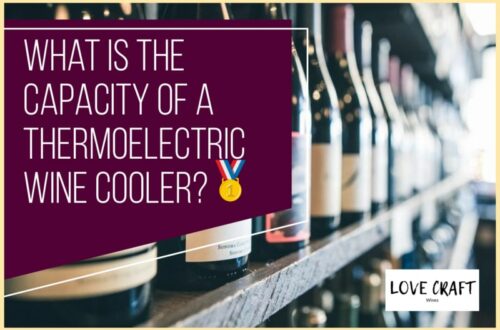In this article we’re going to be talking about how cold a typical gets!
Now, before we dive into the ranges, it’s important to know that there are different types of , and every brand and model has varying cooling capacity.
However, we’ll be able to provide a general answer to this question, alongside the ideal temperatures which are best-suited for storing certain wines at.
So without further ado, let’s get started!
Table of Contents
How Cold does A Get?
Firstly, as we suggested above, there are two main types of , a compressor-powered unit and a thermoelectric unit.
Compressor wine coolers are more common, and are used in units that are generally larger in .
The reason for this is because compressor systems are more powerful, and thus can cope with cooling a larger internal space. However, the trade-off is that these systems have physical moving parts, and thus operate louder than thermoelectric units.
With that being said, due to this increased power, they’re able to achieve a wider capacity.
Compressor – Typical Range
A typical compressor-powered has a range of approximately 40°F – 66°F.
This wide range makes it capable of housing all types of wine, whether you’re looking at storing reds (light medium and full-bodied) such as your Cabernet Sauvignon, Merlot, Shiraz, Bordeaux and others.
Additionally, it can equally house all of your whites, including your Sauvignon Blanc, Pinot Grigio, Chardonnay, Riesling and others.
Thermoelectric – Typical Range
A typical has a range from approximately 47°F – 65°F.
Since the most for storing white wine is around 45°F, it means that whilst a can do this, it’s probably best to use a compressor-powered unit.
Reds can be stored at around 48°F – 50°F, making such a unit ideal. However, thermoelectric systems are generally used in wine coolers with a small (less than 12 bottles).
Storing Wine – Important Aspects
When storing wine, there are several factors which are important to consider, especially when looking to purchase a .
These are:
- Vibration level
- and stability
- Light exposure
Vibration Levels
A study in 2008 by Hyun-Jung Chung et al. called the “Effect of vibration and storage on some physico-chemical properties of a commercial ” showed that when was exposed to a higher number of vibrations over a prolonged period of time, there were associated ‘changes in organic acids, tannis and refractive index’; Which in essense means that there were ultimately changes in the wine’s taste.
Hence, it’s extremely important to choose a which offers zero/low vibrations, especially if you’re a wine collector looking for a long-term solution.
and stability
capacity is another important factor when assessing the viability of a storage solution, in this case, a .
Making sure that the unit has a wide enough range means that it is versatile to accommodate the storage of both red and white wine.
Additionally, it’s crucial to know that the can maintain a consistent over a period of time, because otherwise the wine’s taste will change.
Not only does affect the overall taste and quality of your wine, but can also be an issue.
Too much means that there is an excessive amount of moisture in the air, and this encourages mold, mildew and bacteria to grow; Staining the labels and permeating within porous surfaces.
Now it’s unlikely to have a major impact on the taste of your wine, unless the wine has somehow been opened and not been recorked properly, but it’s certainly something you want, especially if you’re touching the wine bottles when serving.
Light Exposure
Light exposure can disrupt a wine’s chemical compounds, similarly to excessive amounts of oxygen or high temperatures. The result of this means that the wine is prematurely aged, making its’ color, taste and aroma seem “off”.
How exactly does this happen, well it happens due to the light causing sulphurous compounds to form within the wine, at an accelerated rate.
Specific Guidelines
Directly below, we’ve provided specific tempeatures for storing different types of wine.
Store at approximately 45 degrees
- Sauvignon Blanc
- Rose
- Pinot Grigio
Store between 50 & 55 degrees
- Chardonnay
Store between 55 & 60 degrees
- Merlot
- Malbec
- Zinfandel
- Port
- Cabernet Sauvignon
Conclusion
In conclusion, compressor-powered wine fridges have the widest range (40°F – 66°F), when compared to thermoelectric units (47°F – 65°F).
This makes them ideal for both red and white , whether you’re storing Sauvignon Blanc, Pinot Grigio, Merlow or Zinfandel.
Take a look at our top-recommended compressor wine units here.






